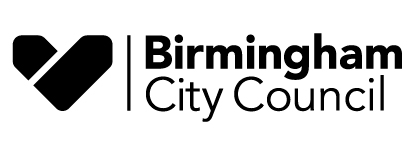In July I joined the team working on Birmingham City Council’s (BCC) Digital Strategy as the Content Designer. I was the only Content Designer in the team. I wanted to do an excellent job on the strategy and also show how valuable Content Designers can be in this type of work. So – no pressure!
The team I joined – a mix of Methods (the consultancy we are working with on this project) and BCC staff – was friendly and welcoming, and I got involved right away.

Understanding our users
When I joined the team, the key themes of the strategy had already been fleshed out, and I got to work tweaking the titles into plainer English. I had access to all the user research and got to sit in on some user research sessions. This was a real treat and, as it turned out, incredibly helpful as I would run my own user testing sessions further down the line.
Layout and accessibility
With the themes of the strategy agreed, I started thinking about the overall structure of the document. My personal passion is accessibility, so I knew from the start that I wanted this to be published as HTML, not a PDF download. PDFs are bad for accessibility as:
- they’re not responsive
- they’re not designed for on-screen reading
- they can be hard to navigate
- it’s difficult to change their colour schemes and text size
I wanted the strategy to be easy for users to navigate to, so came up the three headings on each theme (“What we will do”, “How we will do it” and “What this means for citizens and businesses”). These headings break up the content into manageable sections and allow users to focus on the parts they’re most interested in.
I set out a few initial ideas for the layout, which our Graduate User Experience Designer, Piers, mocked up into wireframes. The ideas centered around ensuring that the strategy would be fully accessible to all users, with sensible titled sections and headings being fully marked up.
We took these out to users for testing, and used their feedback to develop our final version.
Easy read
I first came across easy read at the Content Conference (ConCon) in 2018. Easy read uses a combination of pictures and very simple text, allowing people with only a basic level of literacy to access the content. I felt like the Digital Strategy was an excellent candidate for an easy read version.
I picked out the most important messages that we wanted citizens to take from the strategy, and worked with Piers to find the best pictures to illustrate them.
When we took it out for testing, the feedback from users was really positive with comments like “fab” and “perfect”.
We have also been able to create the easy read as an HTML page, which is an innovative step and I’m really excited for Birmingham citizens to see it.
Iterating
Working on the text of the strategy has been the most time consuming part of it for me – in fact, I’m still working on it. We’ve had numerous sessions with the theme owners in the council and we’ve done extensive user testing. The strategy is written in plain English, and avoids jargon. This allows it to be accessible to people who have little knowledge of all things digital.
Our user testing has flagged areas where we could be clearer, and areas of possible misunderstanding that we have been able to fix. We’ve even had children of colleagues read it. They showed excellent understanding of the concept of “digital”, though some of their feedback could be blunt. To the question, “What bits of it did you find interesting?”, one child responded, “nothing because it’s my dad’s work”, proving no matter how valuable and stressful your job is, you will never impress your 10-year-old kid!

Publishing
We have published a beta version of the strategy, and our easy read HTML page (and PDF download) are online too. As we are still iterating, this is not the final version of the text.
We’re keen to hear what people think, so do drop a comment on this blog if you have any feedback for us.
